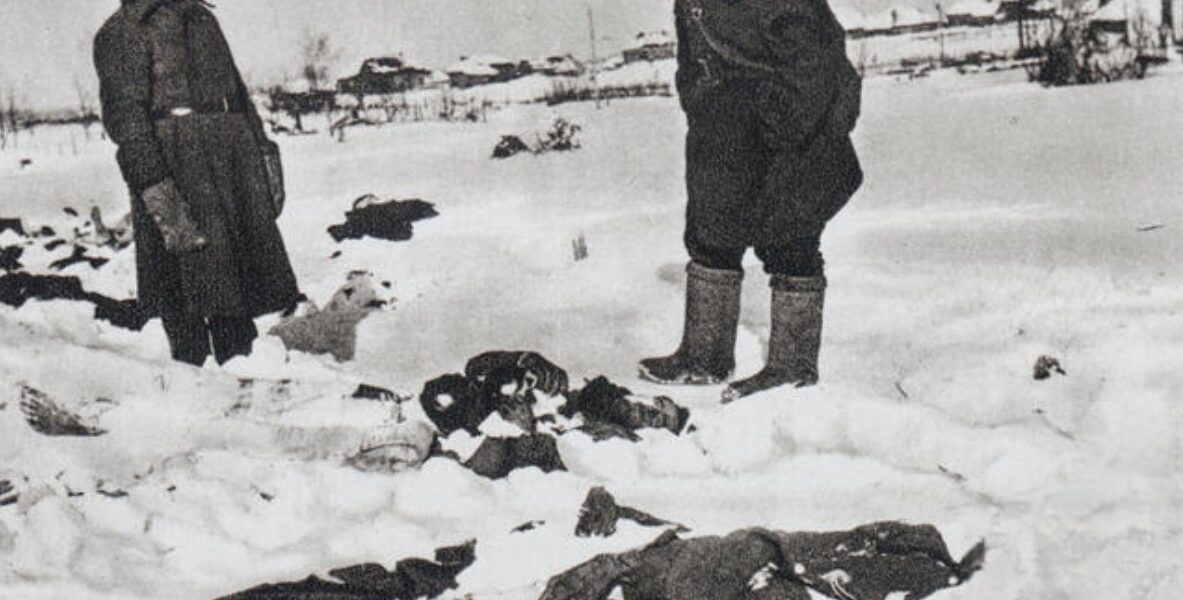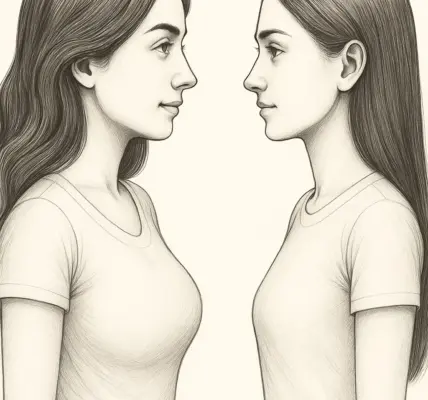
Sometime in the autumn of 1942, Soviet soldiers advance through the rubble of Stalingrad.
The fighting on the Eastern Front represented the largest military conflict in history. It was characterized by unprecedented cruelty, total destruction, mass deportations, and enormous loss of life due to combat, hunger, cold, disease, and massacres.
The Eastern Front was the scene of almost all extermination camps, death marches, ghettos and most pogroms and therefore played a central role in the Holocaust.
Over the course of four years, more than 400 divisions of the Red Army and the Germans clashed in a series of operations along a front more than 1,600 kilometers long.
During these years of brutality, approximately 27 million Soviet soldiers and civilians and almost four million German soldiers lost their lives on the Eastern Front.

The commander of a Cossack unit on active duty in the Kharkov region, Ukraine, observes the advance of his troops on June 21, 1942.
To further complicate matters, the forces within the Soviet Union were often at odds with each other. At the beginning of the war, some groups even welcomed the Germans and fought against the Red Army, hoping that Hitler’s troops would liberate them from Stalin.
Later, as the fighting became increasingly desperate, Stalin issued Order No. 227, “Not a Step Back!”, which forbade Soviet forces from retreating without a direct order.
Commanders who attempted a retreat were brought to justice, and foot soldiers faced “blocking squads” of their own comrades, ready to shoot down anyone who tried to flee.
The Eastern Front was crucial to the outcome of the European part of World War II and ultimately served as the main cause of the defeat of Nazi Germany.

The crew of a German anti-tank rifle, ready for action on the Russian front in late 1942.
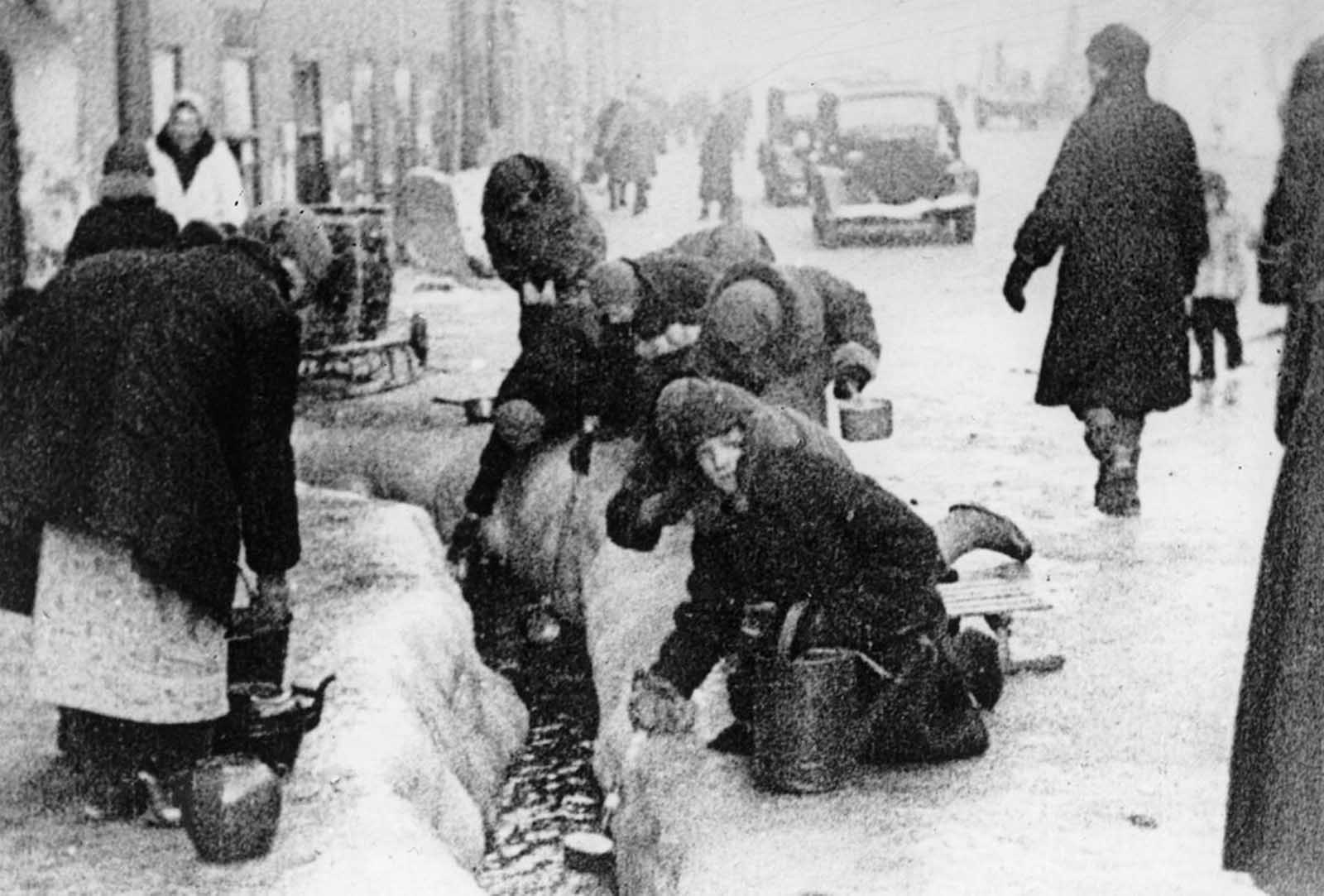
This photograph, taken in the winter months of 1942, shows Leningrad citizens drawing water from a broken water main during the nearly 900-day siege of the Russian city by German invaders. Failing to capture Leningrad (now Saint Petersburg), the Germans cut it off from the outside world, disrupting supplies, and shelling the city heavily for more than two years.
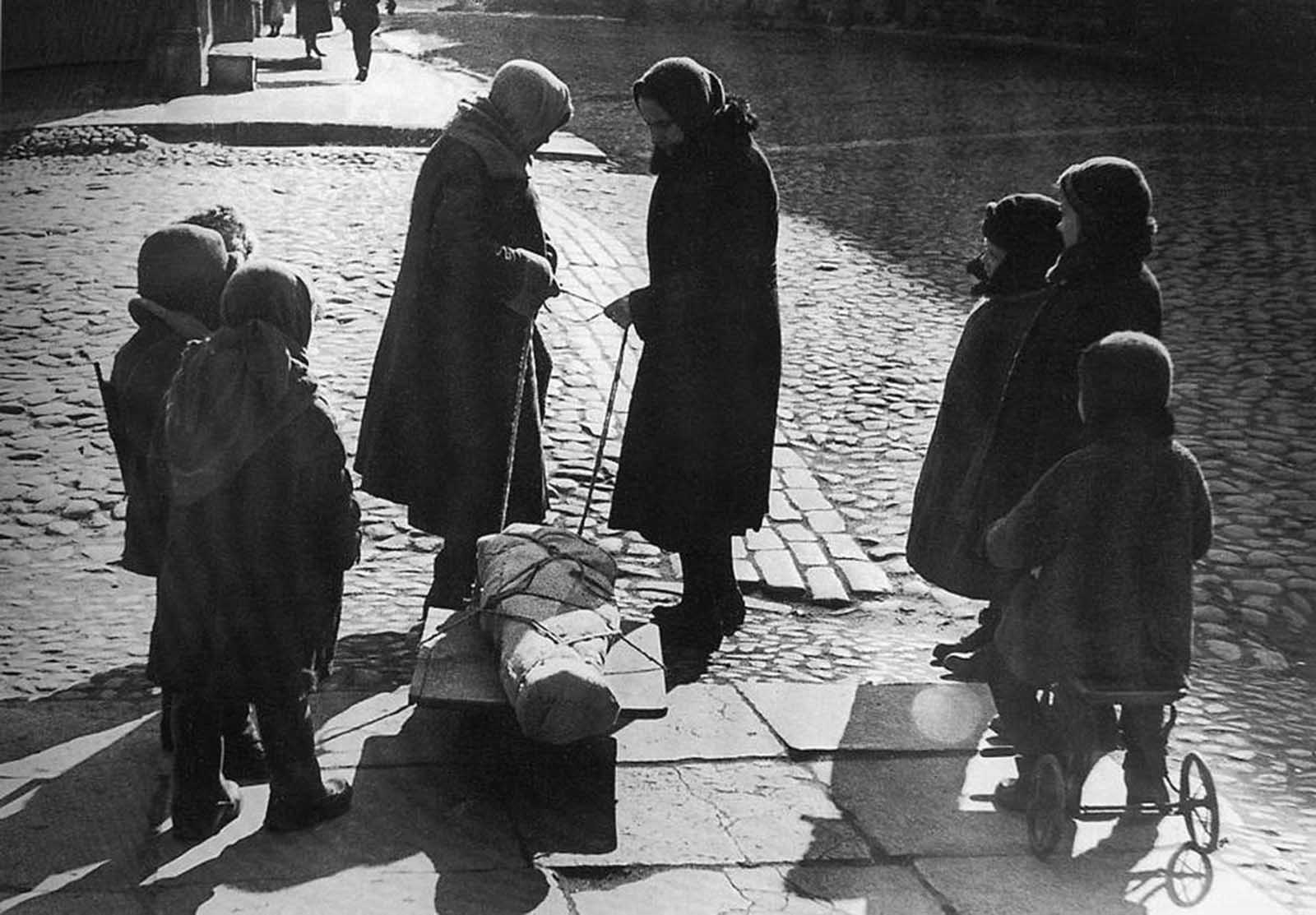
A farewell in Leningrad in the spring of 1942. The German siege of Leningrad led to widespread hunger among the population, and the lack of medical care and facilities made disease and injury far more deadly. During the siege, approximately 1.5 million soldiers and civilians died in Leningrad—almost the same number were evacuated, and many of them did not survive the journey due to hunger, disease, or bombing.

Evidence of the fierce street fighting that took place during the occupation of Rostov, Russia, by German forces in August 1942.
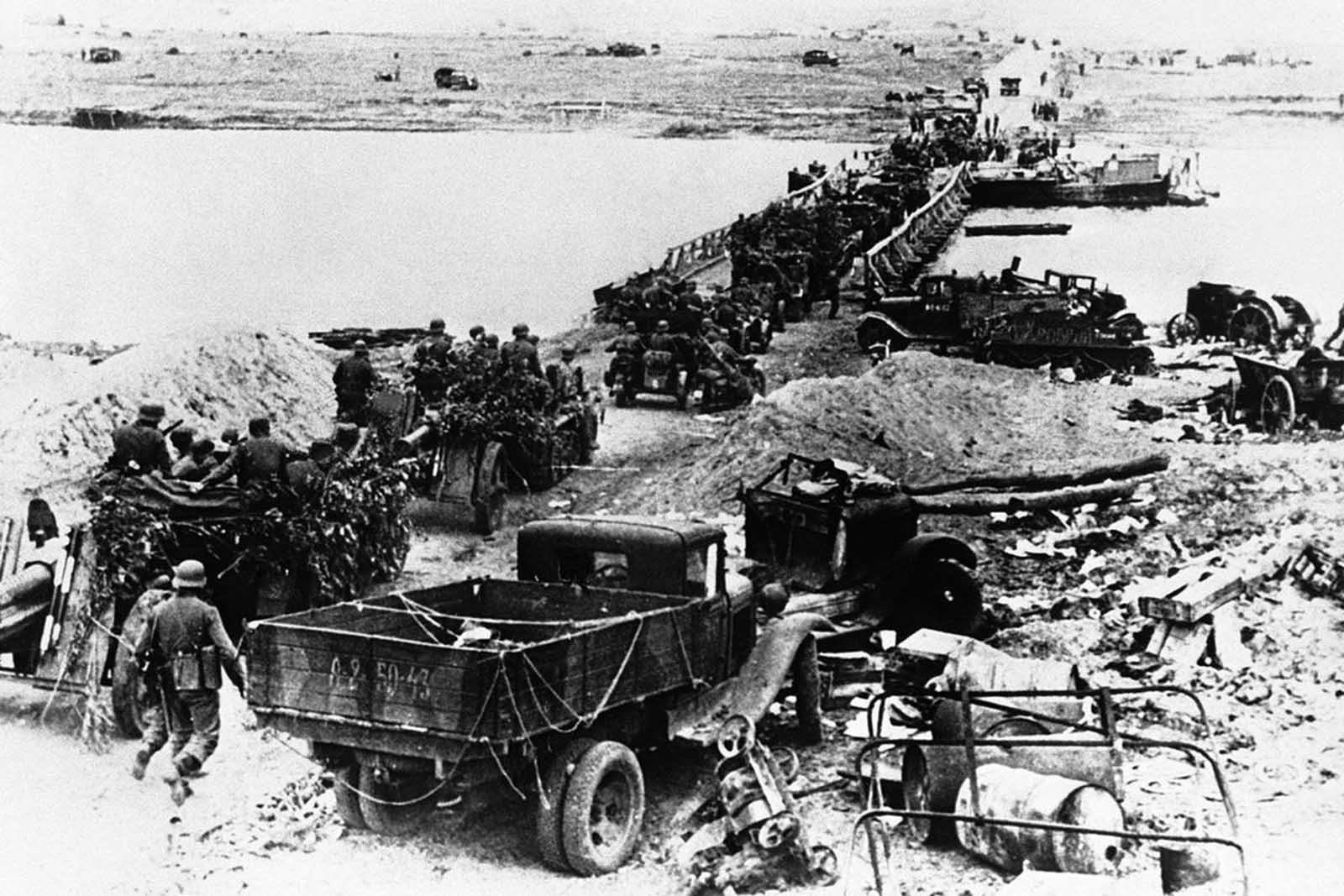
A German motorized artillery column crosses the Don River over a pontoon bridge on July 31, 1942. During the crossing, destroyed equipment and various other materials lie scattered around.
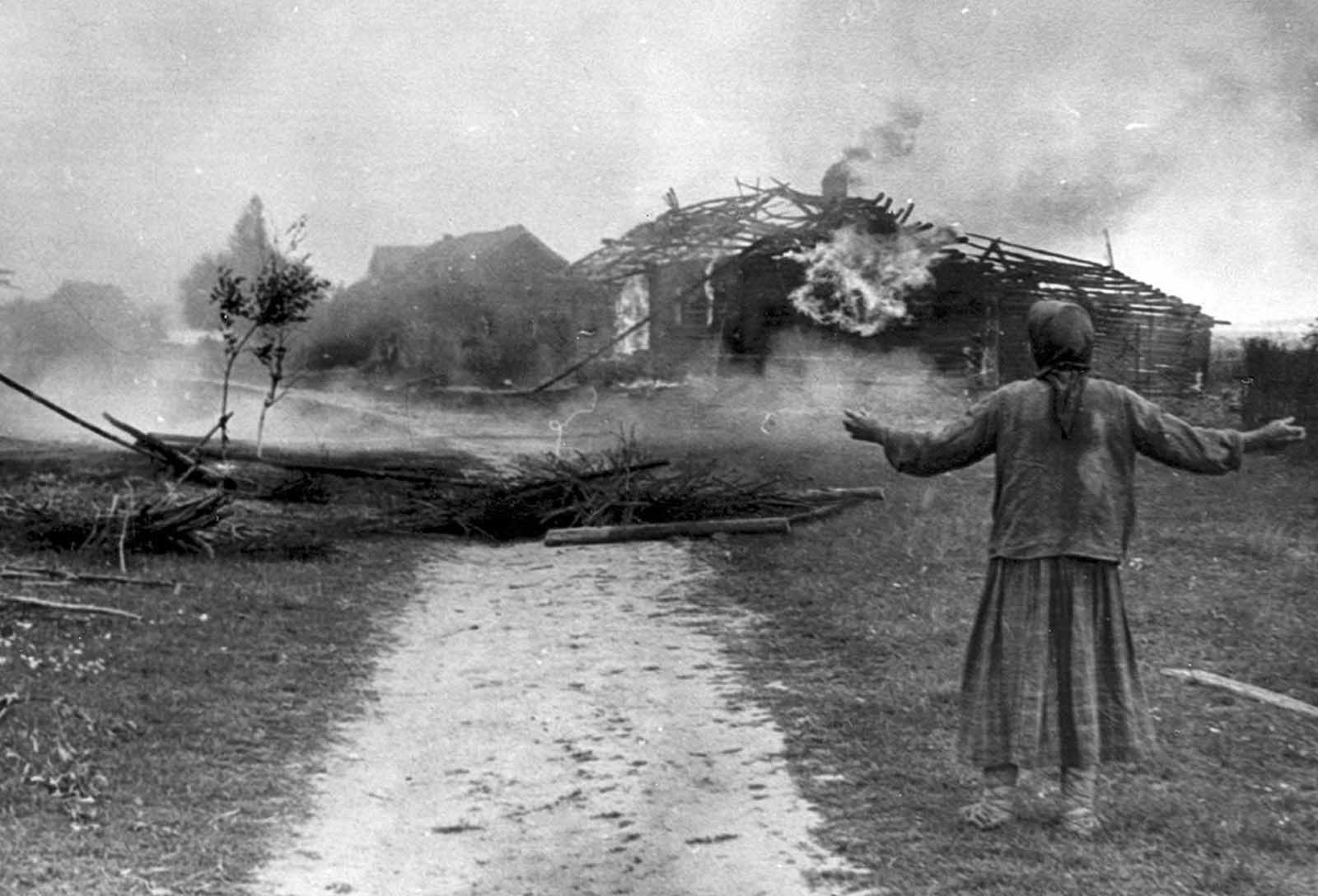
A Russian woman observes a burning building sometime in 1942.
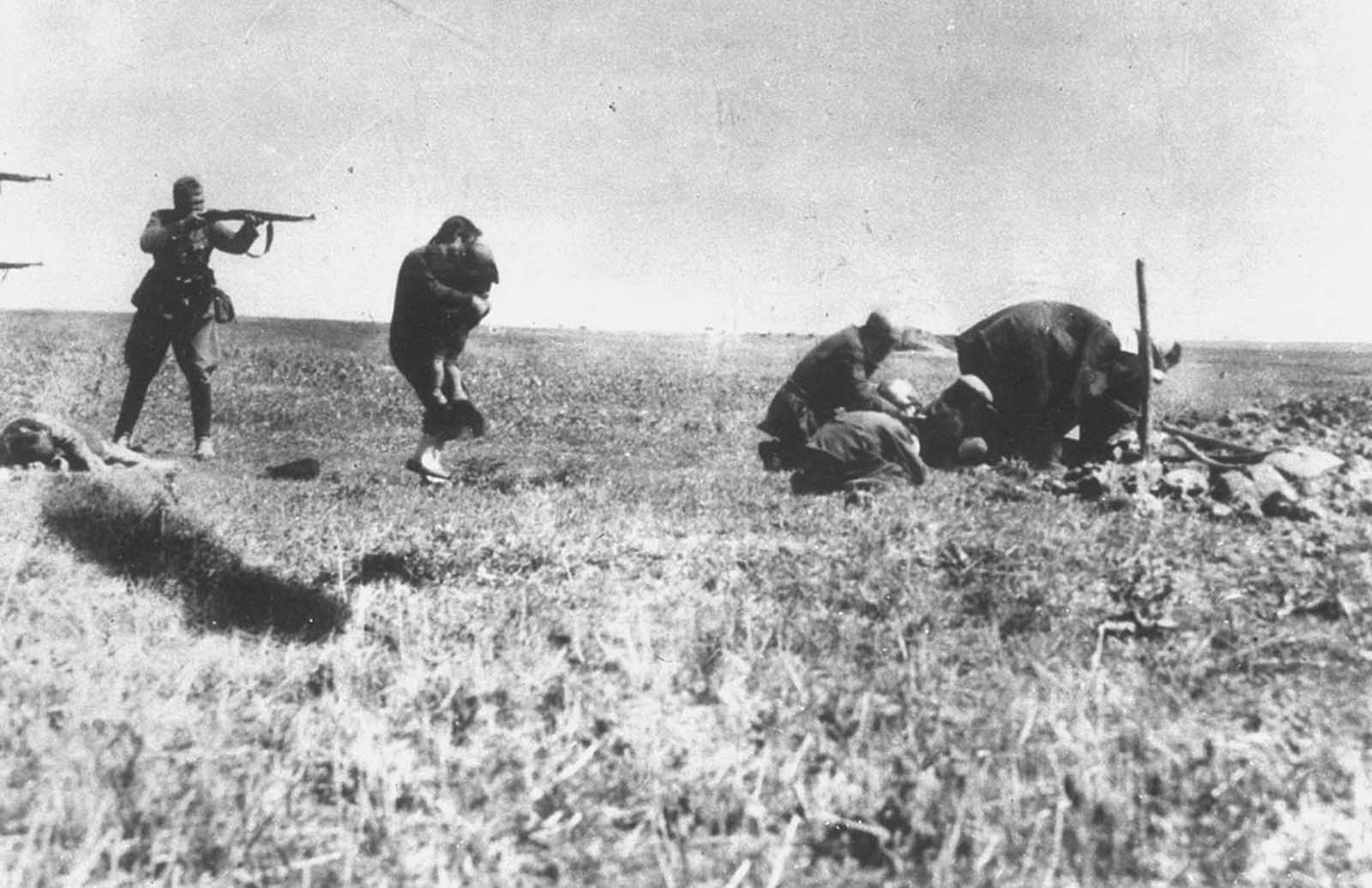
An execution of Jews in Kyiv, carried out by German soldiers near Ivangorod, Ukraine, sometime in 1942. This photograph was sent to Germany from the Eastern Front and intercepted in a Warsaw post office by a member of the Polish resistance who was collecting documents on Nazi war crimes. The original print was owned by Tadeusz Mazur and Jerzy Tomaszewski and is now housed in the Historical Archives in Warsaw. The original German caption on the back of the photograph reads: “Ukraine 1942, Jewish Action [Operation], Ivangorod.” More information about this image .

A German soldier with a machine gun during the Battle of Stalingrad, 1942.

German soldiers cross a Russian river with their tank on August 3, 1942.

This picture, obtained by the Associated Press from a neutral source on September 25, 1942, shows a bomb falling after leaving the aircraft and descending toward Stalingrad.
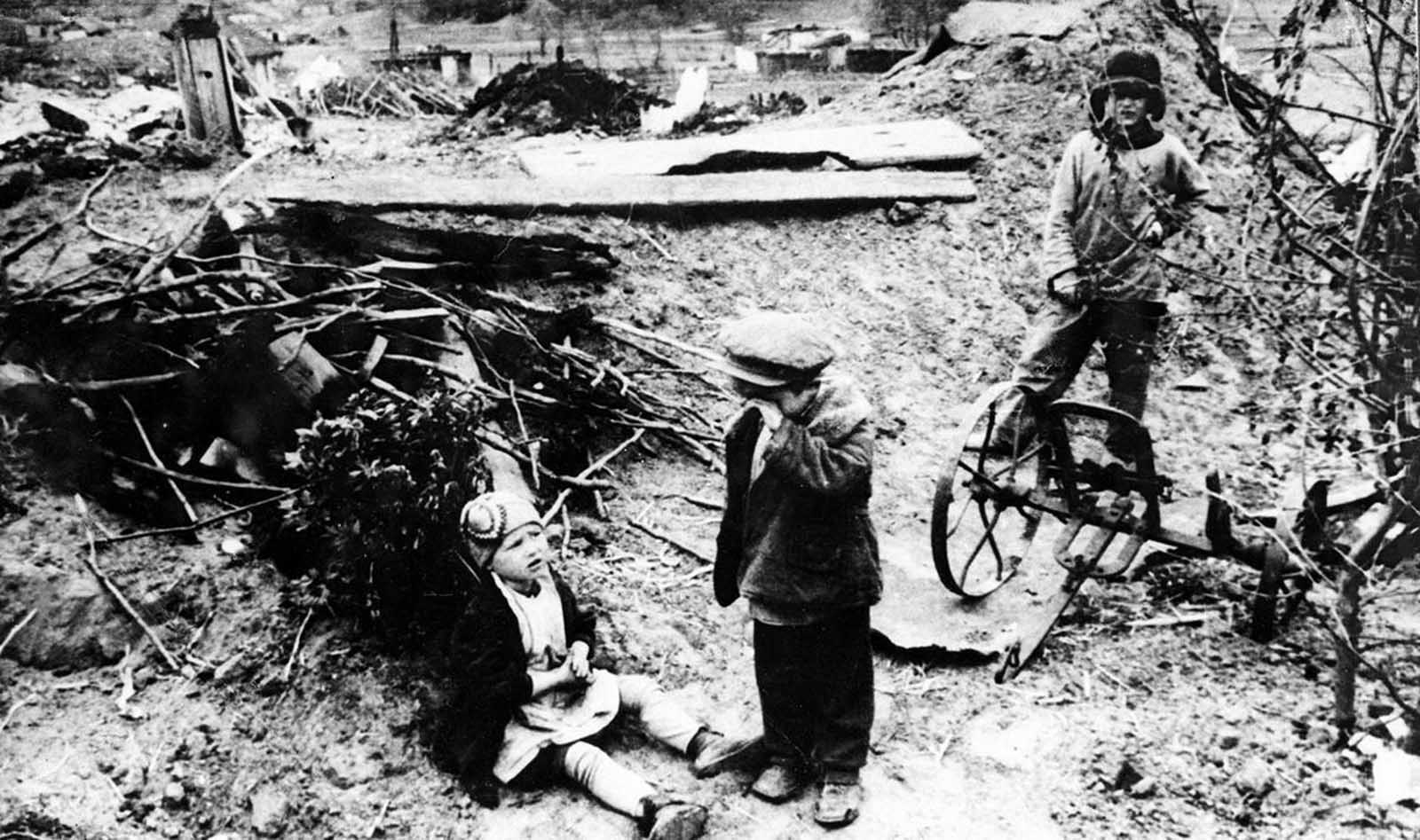
Three Russian war orphans stand amidst the remains of their former home at the end of 1942. After German troops destroyed the family’s house, they captured the parents and left the children alone.
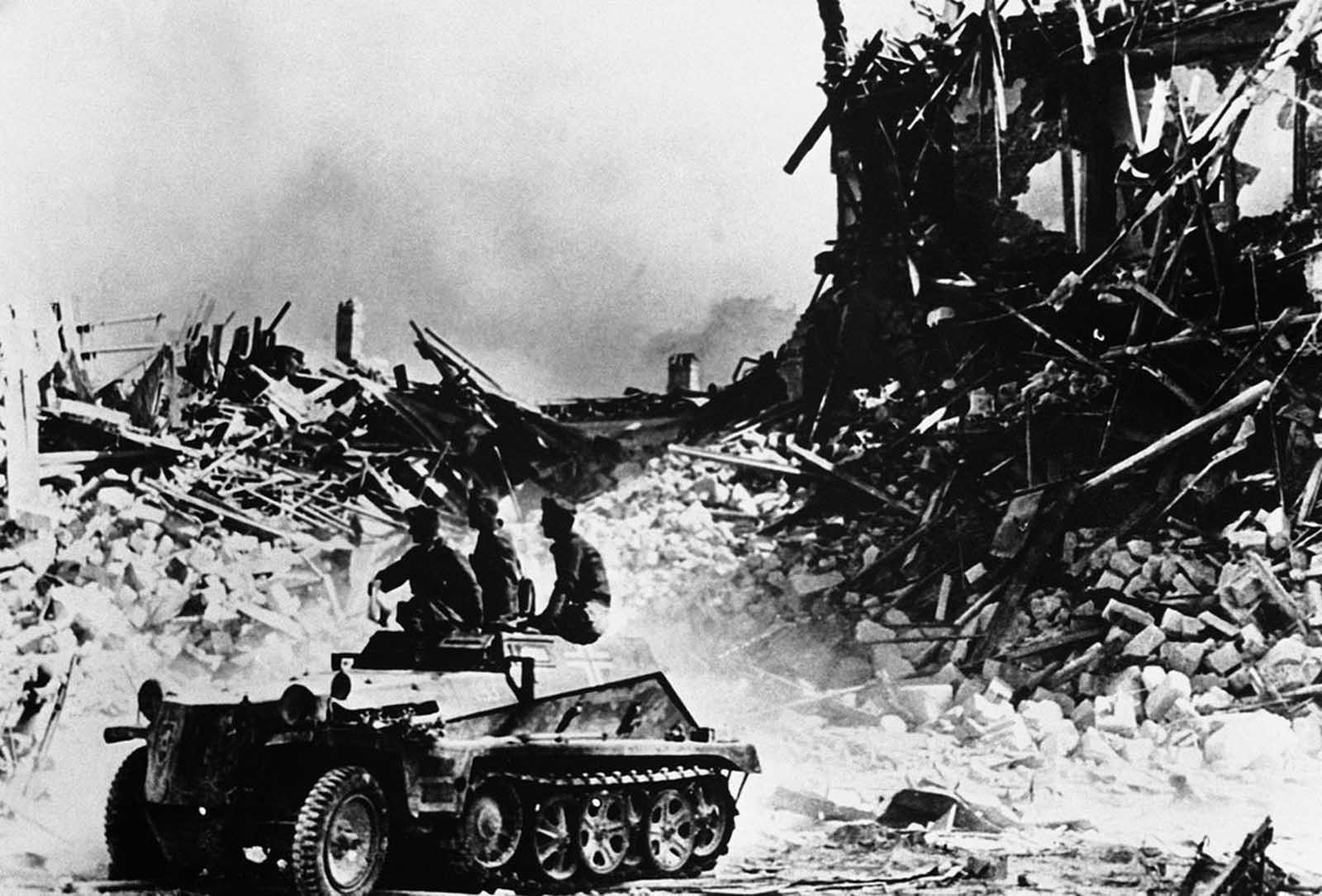
A German armored car amidst the rubble of the Soviet fortress Sevastopol in Ukraine on August 4, 1942.

Stalingrad in October 1942. Soviet soldiers fight in the ruins of the “Red October” factory.
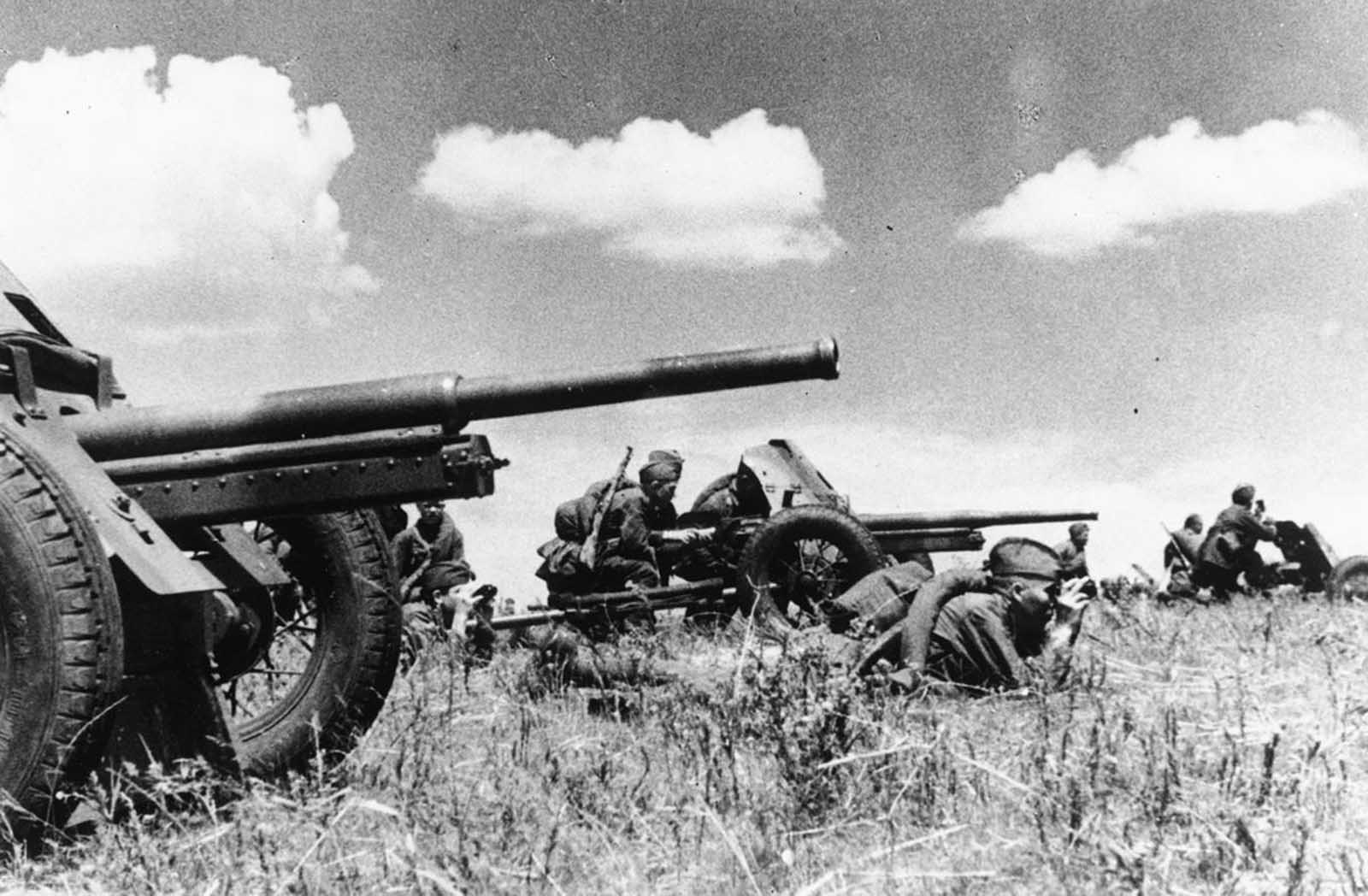
Red Army anti-tank gun crews prepare to fire on approaching German tank units on an unidentified battlefield on October 13, 1942, during the German invasion of the Soviet Union.

In October 1942, a German Junkers Ju 87 “Stuka” dive bomber attacked during the Battle of Stalingrad.

On October 20, 1942, a German tank rolls toward a defeated enemy tank burning at the edge of a forest somewhere in Russia.
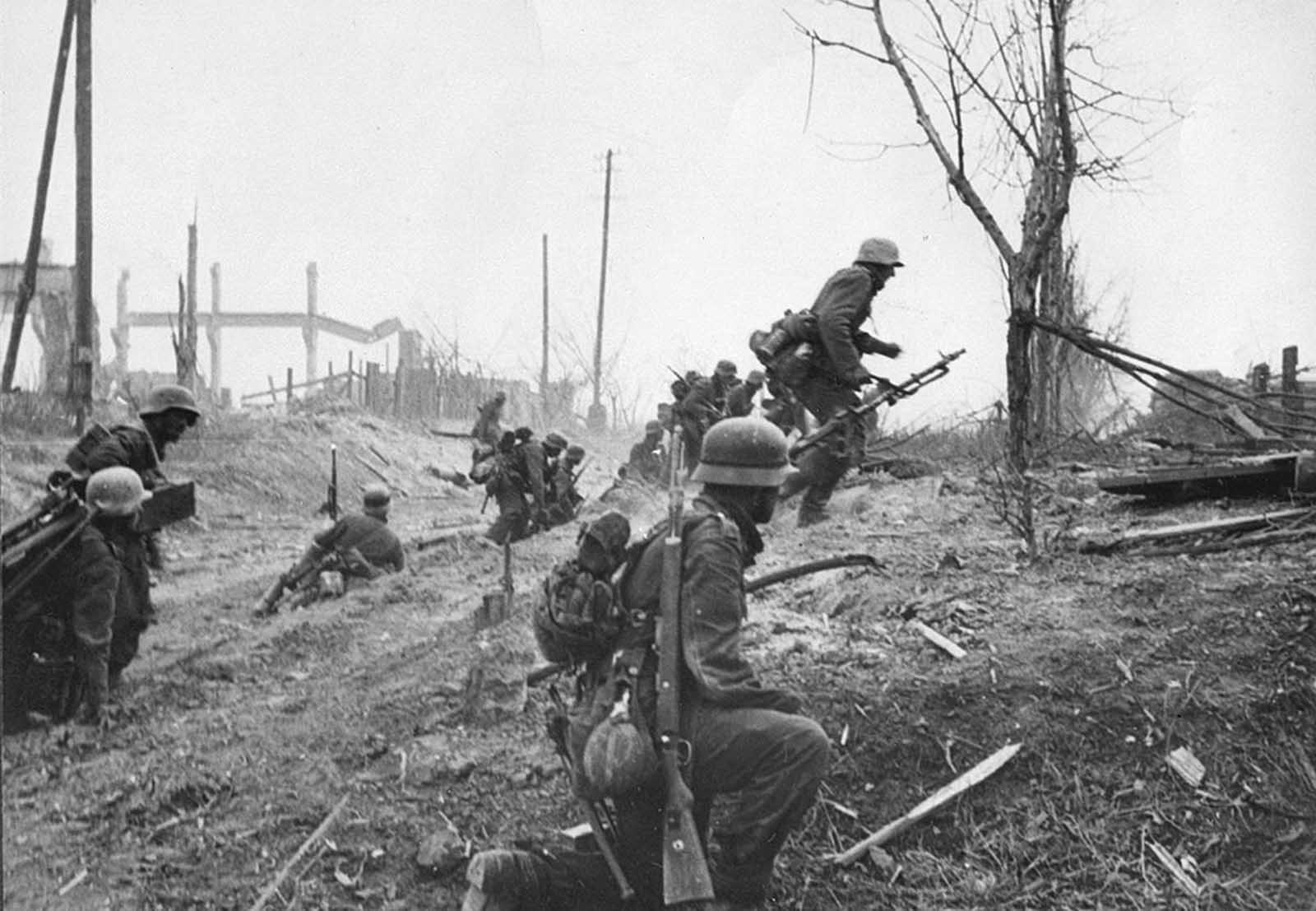
At the end of 1942, German soldiers advance on Stalingrad.

Sometime in the autumn of 1942, a German soldier hangs a Nazi flag on a building in downtown Stalingrad.
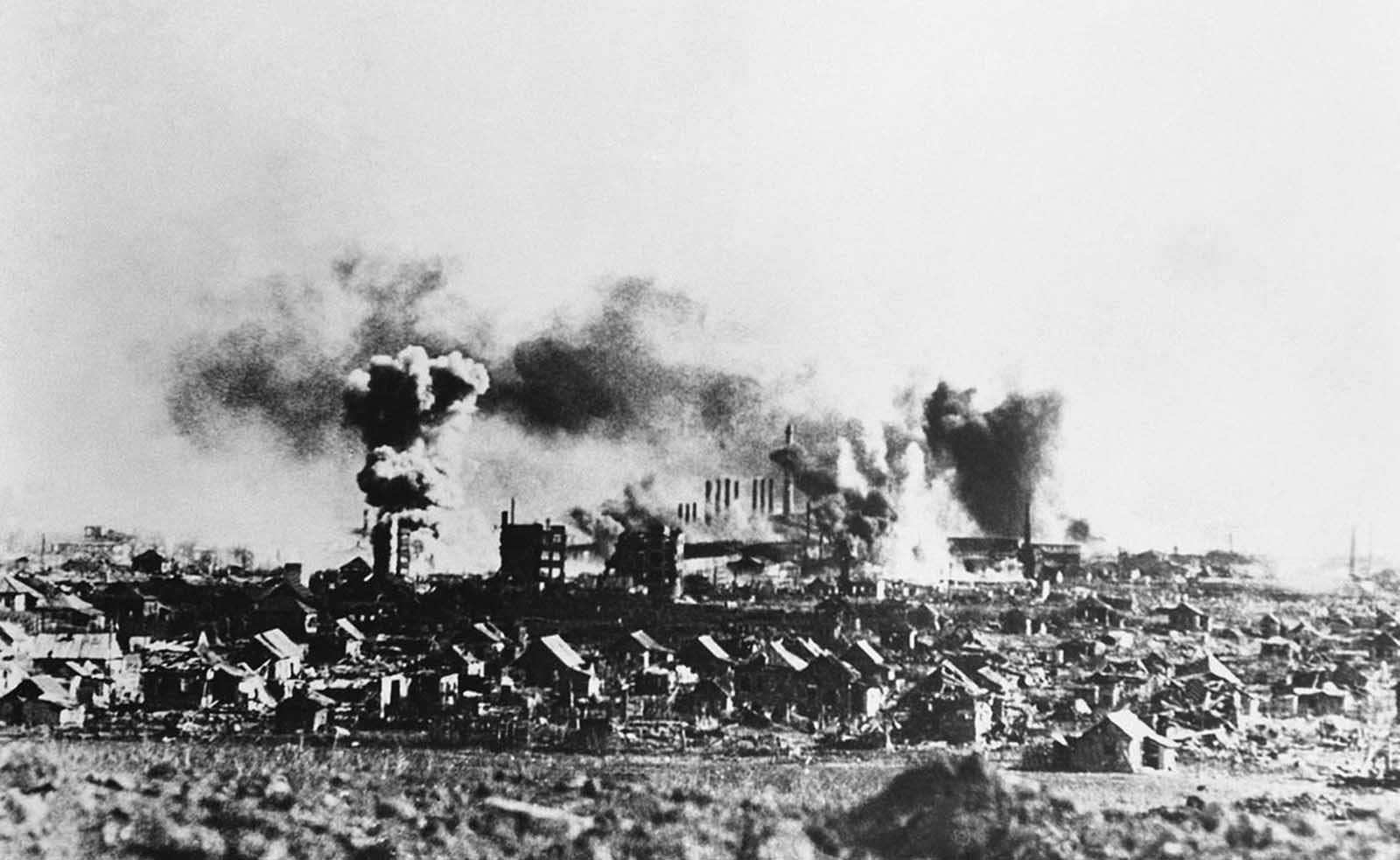
With Russian troops driving behind them and threatening to encircle them, the Germans continue their attempts to capture Stalingrad. This photo from November 24, 1942, shows a Stuka attack on Stalingrad’s factory district.
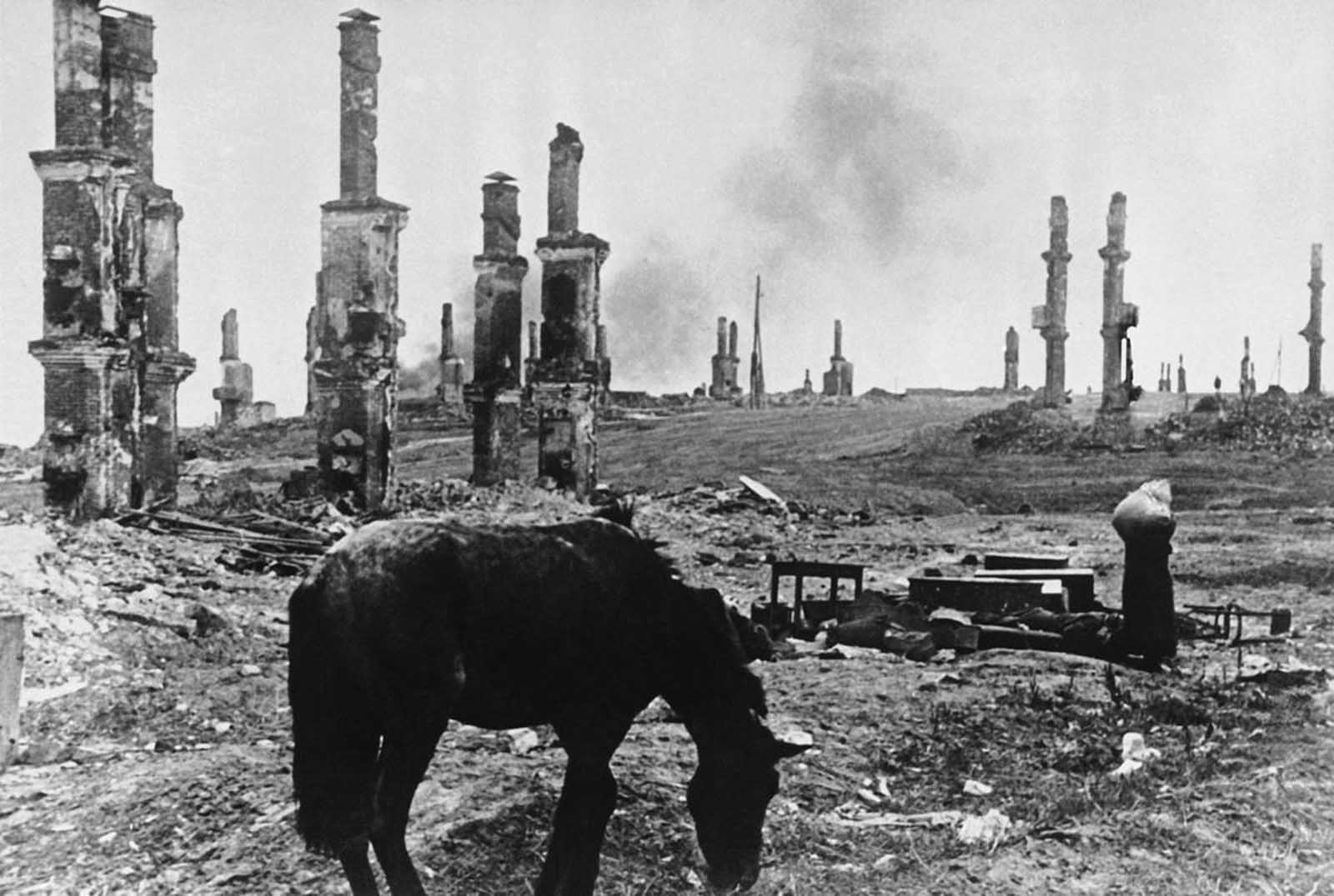
A picture of devastation: An abandoned horse stands in the ruins of Stalingrad in December 1942.
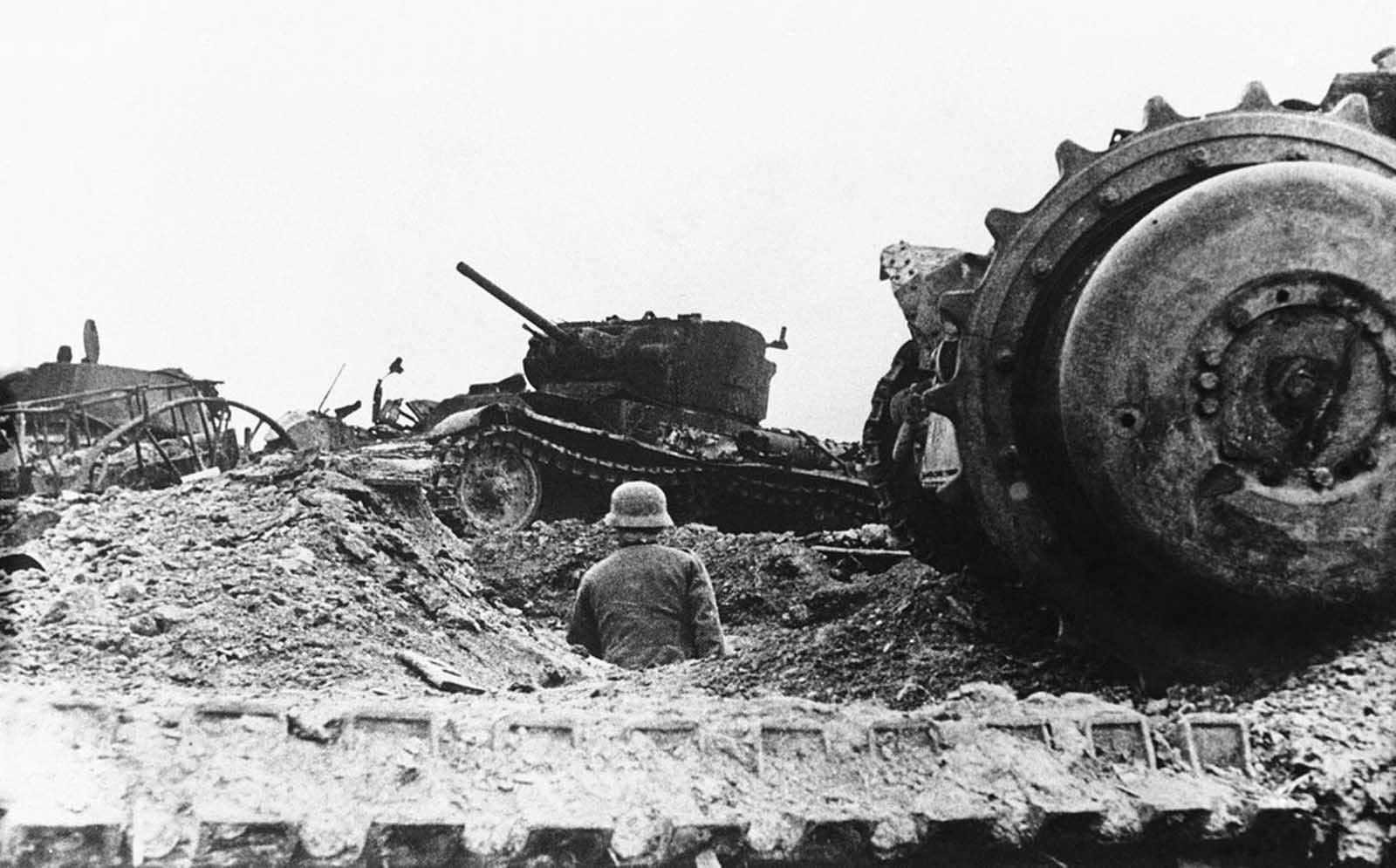
A tank graveyard that the Germans are said to have established in Rzhev on December 21, 1942. This cemetery is said to have contained approximately 2,000 tanks in various stages of decay.

On December 28, 1942, German troops pass a destroyed power plant in the factory district of Stalingrad.

Ruins of part of the city of Stalingrad on November 5, 1942 after fierce battles, with destroyed remains of buildings on both sides.

On December 16, 1942, in the backyard of an abandoned house on the outskirts of the besieged city of Leningrad, a Red Army rifleman stands aiming and firing his machine gun at German positions.
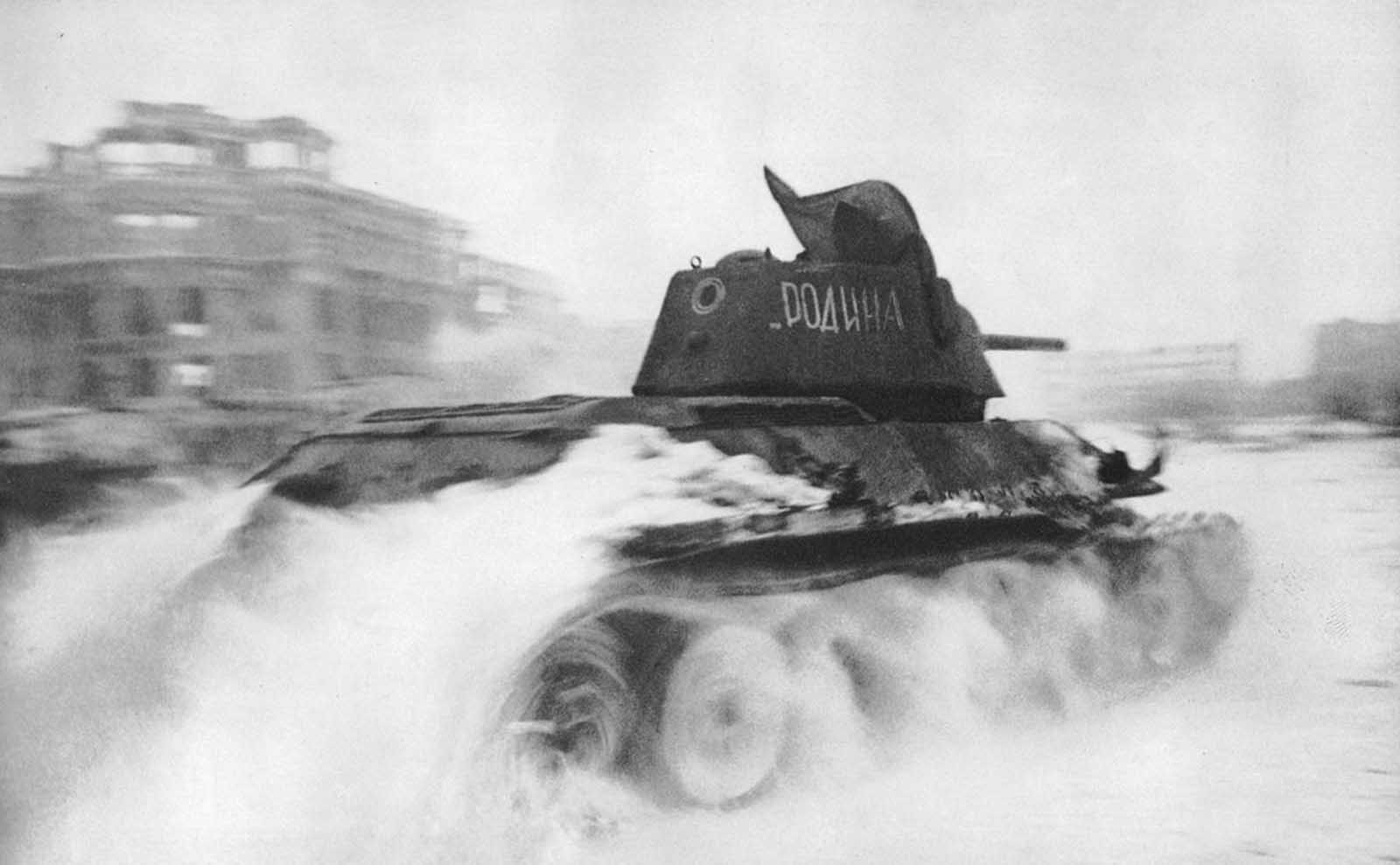
In January 1943, a Soviet T-34 tank thunders across the Square of Fallen Soldiers in Stalingrad.

Soviet soldiers in camouflaged winter uniforms stand in a row on the roof of a house in Stalingrad in January 1943.

Soviet soldiers seek shelter in the rubble of destroyed buildings in early 1943 while engaged in street fighting with German troops on the outskirts of Stalingrad.

German troops were involved in street fighting in the devastated streets of Stalingrad in early 1943.

Red Army soldiers in camouflage clothing on a snow-covered battlefield somewhere along the German-Russian war front during an advance toward German positions on March 3, 1943.

Soviet infantrymen march across the snow-covered hills surrounding Stalingrad on their advance to end the German siege of the city in early 1943. The Red Army eventually encircled the German 6th Army, trapping nearly 300,000 German and Romanian soldiers in a tight pocket.

In February 1943, a Soviet soldier stands guard behind a captured German soldier. Months after the Soviet encirclement of Stalingrad, the remnants of the German Sixth Army surrendered after fierce fighting and starvation had already claimed some 200,000 lives.

German Field Marshal Friedrich Paulus at Red Army headquarters for interrogation in Stalingrad, Russia, on March 1, 1943. Paulus was the first German field marshal captured in the war and defied Hitler’s expectations that he would fight to the death (or take his own life in defeat). Paulus eventually became a vocal critic of the Nazi regime during his Soviet captivity and later served as a prosecution witness at the Nuremberg Trials.

Red Army soldiers in a trench as a Russian T-34 tank drives over them during the Battle of Kursk in 1943.

In June 1943, Soviet soldiers lying on their backs fire a volley of bullets at enemy aircraft.
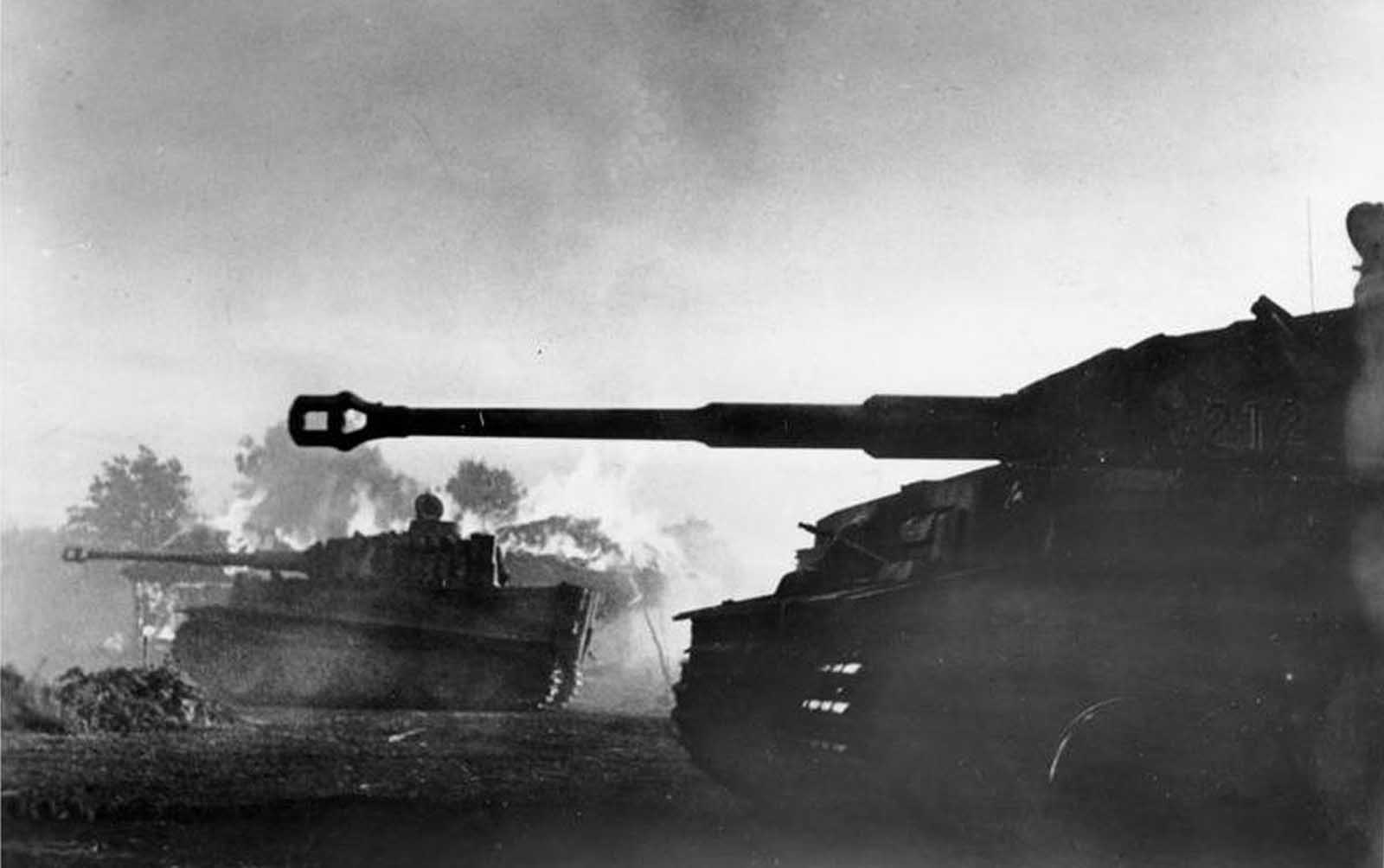
In mid-July 1943, the German Army’s Tiger tanks were engaged in heavy fighting south of Orel during the Battle of Kursk. From July to August 1943, the Kursk region saw some of the largest tank battles in history, as the Germans deployed approximately 3,000 of their tanks against more than 5,000 Soviet tanks.
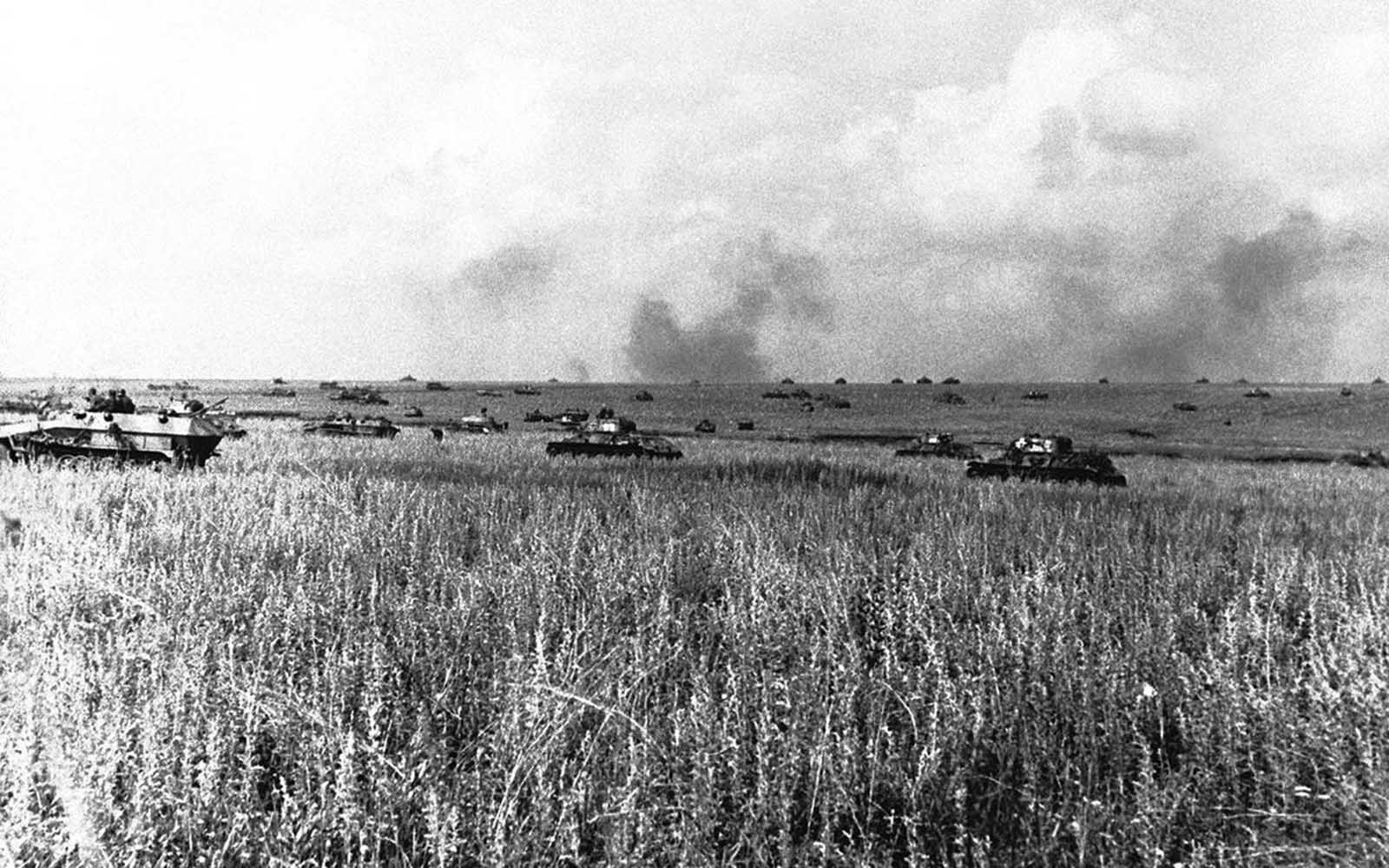
On July 28, 1943, during the Battle of Kursk, large numbers of German tanks were gathering for a new attack on Soviet fortifications. Although the German armed forces had spent months preparing for the offensive, they fell far short of their objectives—the Soviets were aware of their plans and had built massive defenses. After the German defeat at Kursk, the Red Army virtually dominated for the remainder of the war.
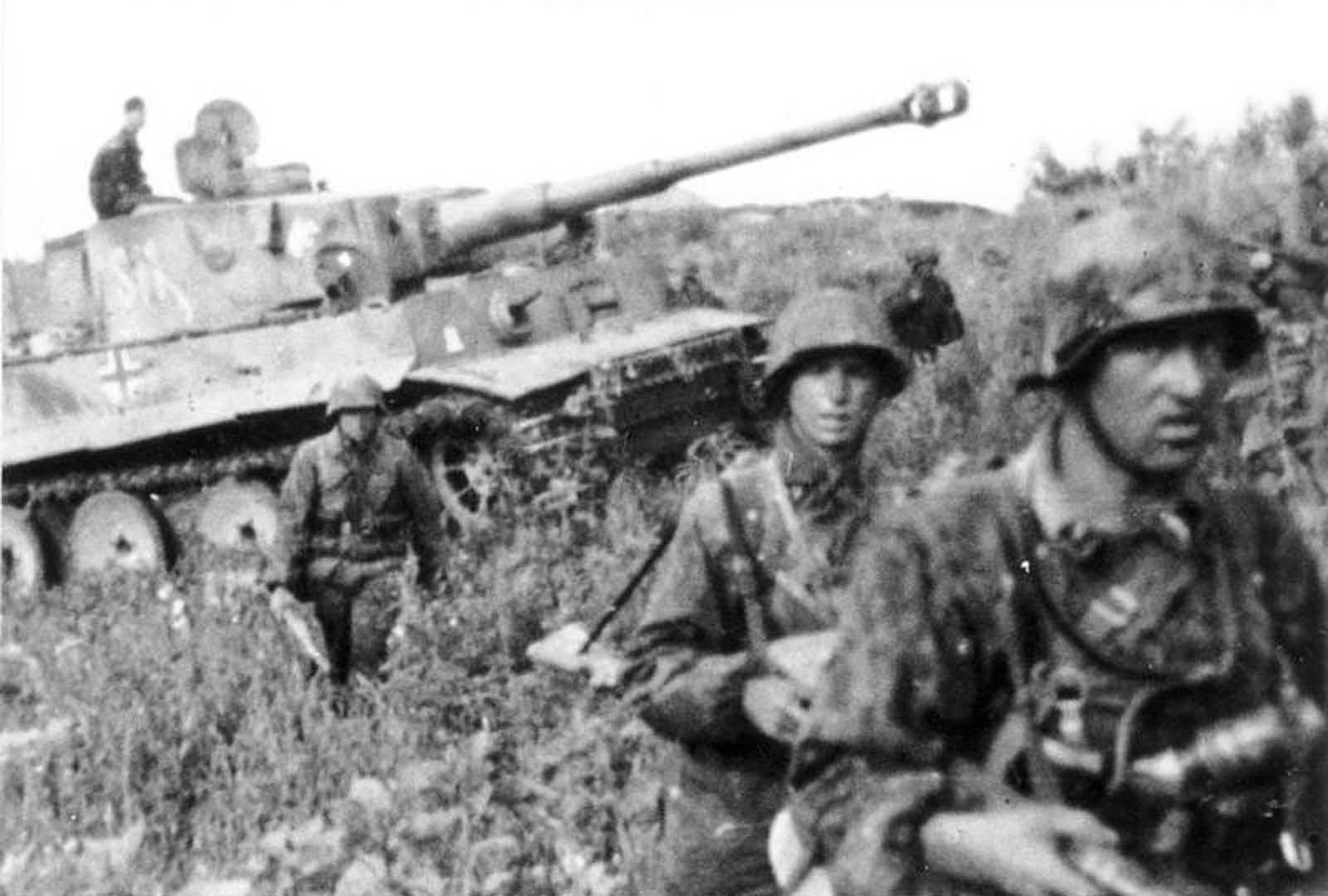
German soldiers march in front of a Tiger tank during the Battle of Kursk in June or July 1943.
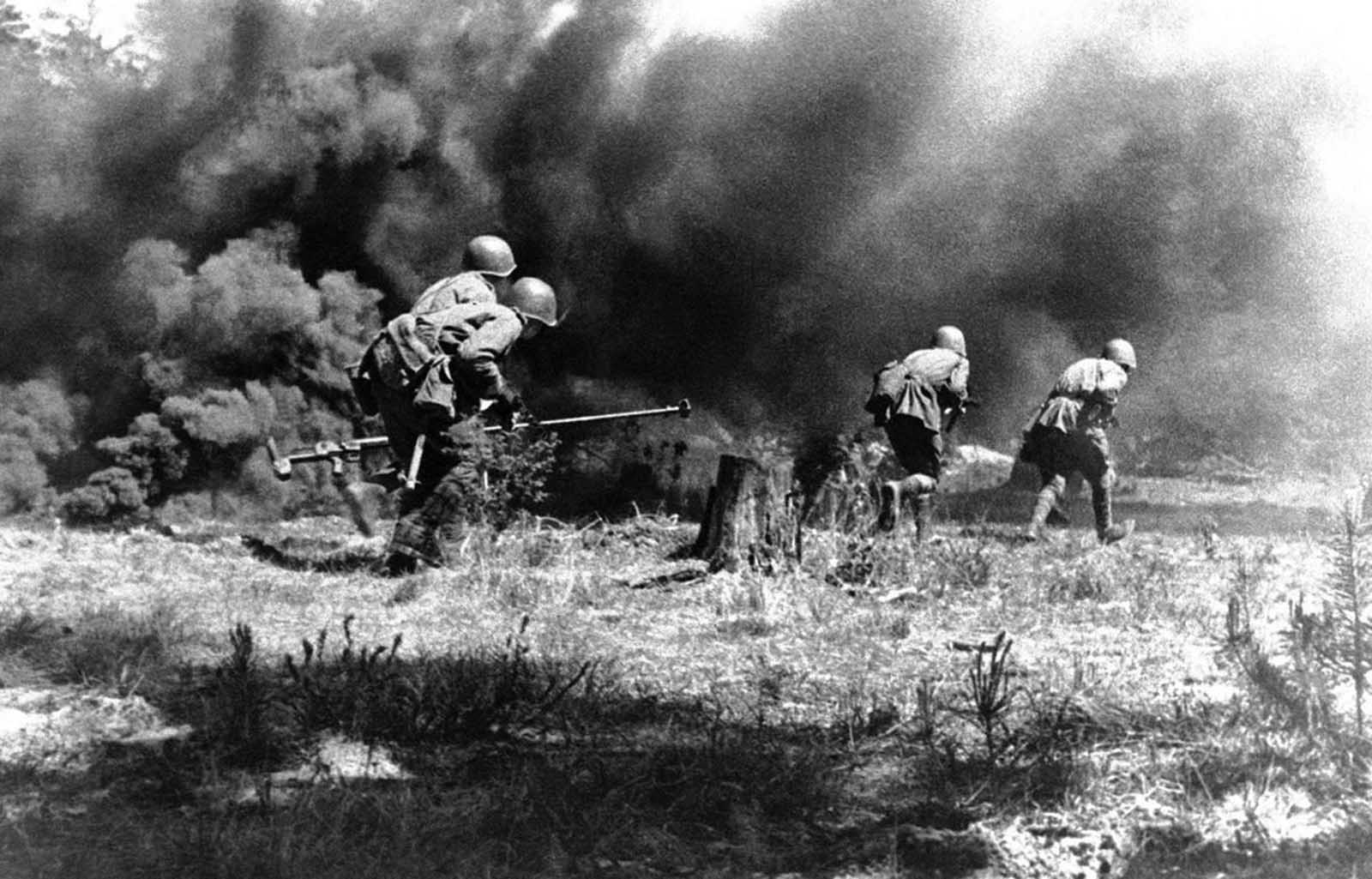
On July 23, 1943, the crew of a Russian anti-tank gun advances toward the German positions under the cover of a smokescreen somewhere in Russia.

Captured German tanks southwest of Stalingrad, shown on April 14, 1943.
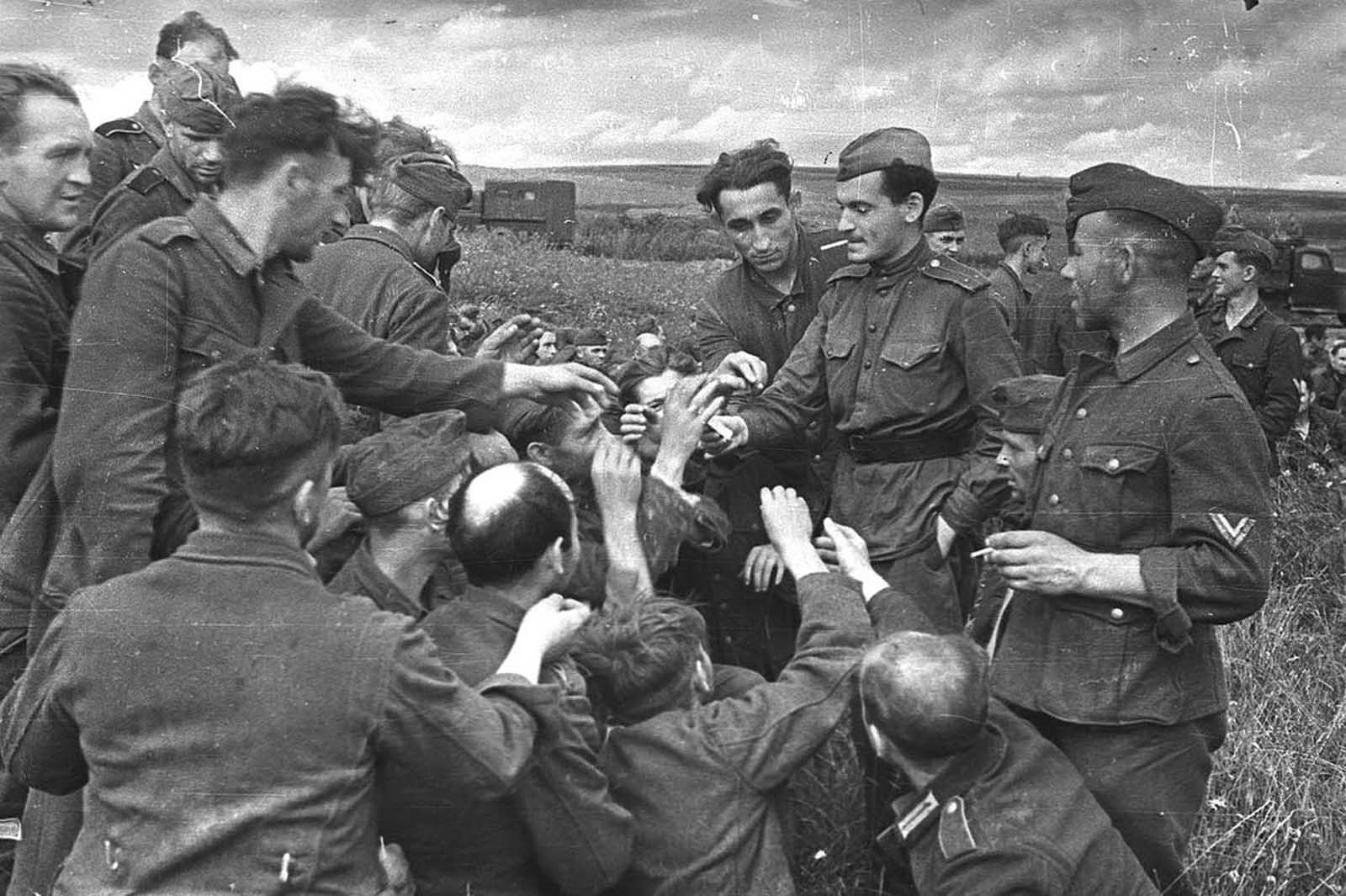
Somewhere near Kursk, a Soviet lieutenant gives cigarettes to German prisoners in July 1943.

The ruins of Stalingrad, almost completely destroyed after about six months of brutal warfare, seen from an airplane after the end of hostilities in late 1943.
